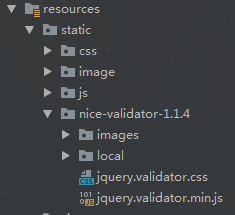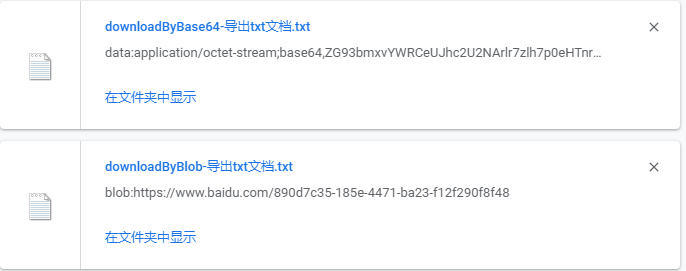
在本教程中,我们将学习如何使用 JS 进行AJAX调用。
1.AJAX
术语AJAX 表示 异步的 JavaScript 和 XML。
AJAX 在 JS 中用于发出异步网络请求来获取资源。当然,不像名称所暗示的那样,资源并不局限于XML,还用于获取JSON、HTML或纯文本等资源。
有多种方法可以发出网络请求并从服务器获取数据。 我们将一一介绍。
2.XMLHttpRequest
XMLHttpRequest对象(简称XHR)在较早的时候用于从服务器异步检索数据。
之所以使用XML,是因为它首先用于检索XML数据。现在,它也可以用来检索JSON, HTML或纯文本。
事例 2.1: GET
function success() {
var data = JSON.parse(this.responseText)
console.log(data)
}
function error (err) {
console.log('Error Occurred:', err)
}
var xhr = new XMLHttpRequest()
xhr.onload = success
xhr.onerror = error
xhr.open(GET, https://jsonplaceholder.typicode.com/posts/1)
xhr.send()我们看到,要发出一个简单的GET请求,需要两个侦听器来处理请求的成功和失败。我们还需要调用open()和send()方法。来自服务器的响应存储在responseText变量中,该变量使用JSON.parse()转换为JavaScript 对象。
function success() {
var data = JSON.parse(this.responseText);
console.log(data);
}
function error(err) {
console.log('Error Occurred :', err);
}
var xhr = new XMLHttpRequest();
xhr.onload = success;
xhr.onerror = error;
xhr.open(POST, https://jsonplaceholder.typicode.com/posts);
xhr.setRequestHeader(Content-Type, application/json; charset=UTF-8);
xhr.send(JSON.stringify({
title: 'foo',
body: 'bar',
userId: 1
})
);我们看到POST请求类似于GET请求。 我们需要另外使用setRequestHeader设置请求标头“Content-Type” ,并使用send方法中的JSON.stringify将JSON正文作为字符串发送。
2.3 XMLHttpRequest vs Fetch
早期的开发人员,已经使用了好多年的 XMLHttpRequest来请求数据了。 现代的fetch API允许我们发出类似于XMLHttpRequest(XHR)的网络请求。 主要区别在于fetch() API使用Promises,它使 API更简单,更简洁,避免了回调地狱。
3. Fetch API
Fetch 是一个用于进行AJAX调用的原生 JavaScript API,它得到了大多数浏览器的支持,现在得到了广泛的应用。
3.1 API用法
fetch(url, options)
.then(response => {
// handle response data
})
.catch(err => {
// handle errors
});API参数
fetch() API有两个参数
1、url是必填参数,它是您要获取的资源的路径。
2、options是一个可选参数。不需要提供这个参数来发出简单的GET请求。
- method: GET | POST | PUT | DELETE | PATCH
headers: 请求头,如
{ “Content-type”: “application/json; charset=UTF-8” }- mode: cors | no-cors | same-origin | navigate
- cache: default | reload | no-cache
- body: 一般用于POST请求
API返回Promise对象
fetch() API返回一个promise对象。
- 如果存在网络错误,则将拒绝,这会在
.catch()块中处理。 - 如果来自服务器的响应带有任何状态码(如
200、404、500),则promise将被解析。响应对象可以在.then()块中处理。
错误处理
请注意,对于成功的响应,我们期望状态代码为200(正常状态),但是即使响应带有错误状态代码(例如404(未找到资源)和500(内部服务器错误)),fetch() API 的状态也是 resolved,我们需要在.then() 块中显式地处理那些。
我们可以在response 对象中看到HTTP状态:
- HTTP状态码,例如200。
- ok –布尔值,如果HTTP状态代码为200-299,则为
true。
3.2 示例:GET
const getTodoItem = fetch('https://jsonplaceholder.typicode.com/todos/1') .then(response => response.json()) .catch(err => console.error(err)); getTodoItem.then(response => console.log(response));
Response
{ userId: 1, id: 1, title: delectus aut autem, completed: false }在上面的代码中需要注意两件事:
错误处理
我们来看看当HTTP GET请求抛出500错误时会发生什么:
fetch('http://httpstat.us/500') // this API throw 500 error
.then(response => () => {
console.log(Inside first then block);
return response.json();
})
.then(json => console.log(Inside second then block, json))
.catch(err => console.error(Inside catch block:, err));Inside first then block ➤ ⓧ Inside catch block: SyntaxError: Unexpected token I in JSON at position 4
我们看到,即使API抛出500错误,它仍然会首先进入then()块,在该块中它无法解析错误JSON并抛出catch()块捕获的错误。
这意味着如果我们使用fetch()API,则需要像这样显式地处理此类错误:-
fetch('http://httpstat.us/500')
.then(handleErrors)
.then(response => response.json())
.then(response => console.log(response))
.catch(err => console.error(Inside catch block:, err));
function handleErrors(response) {
if (!response.ok) { // throw error based on custom conditions on response
throw Error(response.statusText);
}
return response;
}➤ Inside catch block: Error: Internal Server Error at handleErrors (Script snippet %239:9)
3.3 示例:POST
fetch('https://jsonplaceholder.typicode.com/todos', {
method: 'POST',
body: JSON.stringify({
completed: true,
title: 'new todo item',
userId: 1
}),
headers: {
Content-type: application/json; charset=UTF-8
}
})
.then(response => response.json())
.then(json => console.log(json))
.catch(err => console.log(err))Response
➤ {completed: true, title: new todo item, userId: 1, id: 201}在上面的代码中需要注意两件事:-
POST请求类似于GET请求。 我们还需要在fetch()API的第二个参数中发送method,body和headers属性。我们必须需要使用
JSON.stringify()将对象转成字符串请求body参数
4.Axios API
Axios API非常类似于fetch API,只是做了一些改进。我个人更喜欢使用Axios API而不是fetch() API,原因如下:
- 为GET 请求提供
axios.get(),为 POST 请求提供axios.post()等提供不同的方法,这样使我们的代码更简洁。 - 将响应代码(例如404、500)视为可以在
catch()块中处理的错误,因此我们无需显式处理这些错误。 - 它提供了与IE11等旧浏览器的向后兼容性
- 它将响应作为JSON对象返回,因此我们无需进行任何解析
4.1 示例:GET
// 在chrome控制台中引入脚本的方法 var script = document.createElement('script'); script.type = 'text/javascript'; script.src = 'https://unpkg.com/axios/dist/axios.min.js'; document.head.appendChild(script);
axios.get('https://jsonplaceholder.typicode.com/todos/1')
.then(response => console.log(response.data))
.catch(err => console.error(err));Response
{ userId: 1, id: 1, title: delectus aut autem, completed: false }我们可以看到,我们直接使用response获得响应数据。数据没有任何解析对象,不像fetch() API。
错误处理
axios.get('http://httpstat.us/500')
.then(response => console.log(response.data))
.catch(err => console.error(Inside catch block:, err));Inside catch block: Error: Network Error
我们看到,500错误也被catch()块捕获,不像fetch() API,我们必须显式处理它们。
4.2 示例:POST
axios.post('https://jsonplaceholder.typicode.com/todos', {
completed: true,
title: 'new todo item',
userId: 1
})
.then(response => console.log(response.data))
.catch(err => console.log(err)) {completed: true, title: new todo item, userId: 1, id: 201}我们看到POST方法非常简短,可以直接传递请求主体参数,这与fetch()API不同。
更多编程相关知识,请访问:编程视频!!






